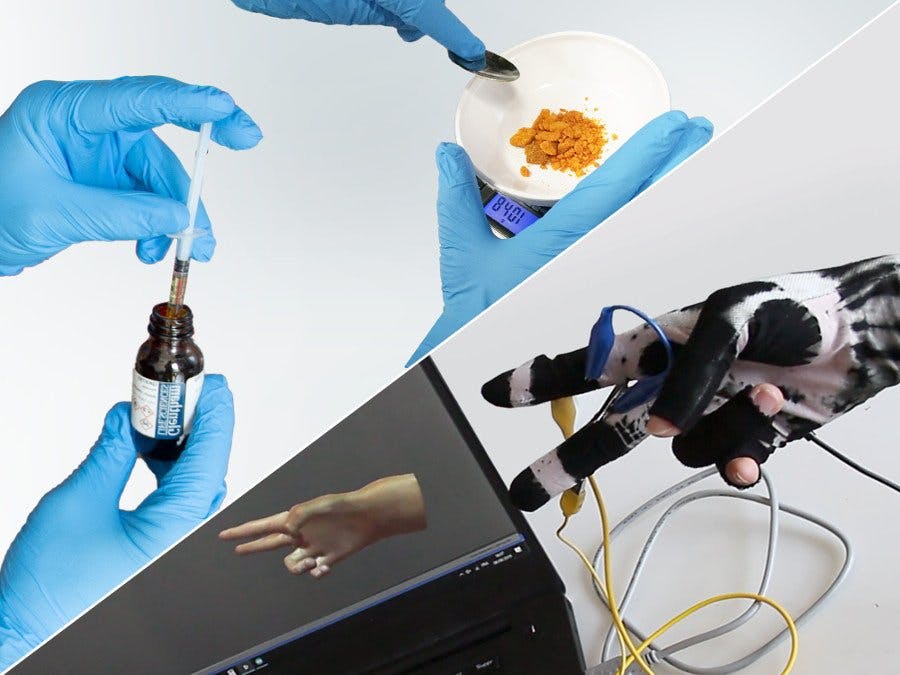Academic publications: CounterChemists.github.io/#academic-publications
Application examples:We use a chemical process called in-situ polymerization (explained later).
It allows "functionalizing" almost anything fibrous and porous materials (natural ones like cotton or cork work better than synthetics in general).
Once polymerized, your originally un-functional material ends up with sensing capabilities:- pressure - stretch- capacitive- humidity- temperature
How?The following video summarizes the process, but you'll need chemical products:- Europe source: Pyrrole + Iron Chloride- US source: Pyrrole + Iron Chloride
...and get a machine to mix your materials for about 1h, example:- chemistry magnetic stirrer- ice cream maker- a batter mixer- a camping washing machine- or you can build it with a drill and a bucket for example.
Protocol summaryAdapt X to your quantity:
1) Water: ( X ) ml - fill the container so that there's about 75% of textile (but don't put it yet!)
2) Pyrrole: ( X / 250 ) ml - add it and stir it
3) Material: add it and keep stirring for 10 minutes
4) Iron chloride: ( X / 100 ) mg - keep stirring for 30-60 minutes depending on the material
5) for capacitive sensors: you can repeat this procedure, or multiply these proportions and polymerization time by 2 to 5 (depending on the material too).
💡💡💡💡💡💡💡💡💡
The process, called in-situ polymerization, is particularly unique because:- First we soak the textile with the monomer (steps 1 to 3)- Then we trigger the polymerization (in-situ, or in place)
This reaction creates a kind of "molecular dyeing with carbon" which has much stronger properties than a coating approach.
Note: every material reacts differently so you'll have to do a couple of tests to get the right chemistry ratios, and the right timings...
💡💡💡💡💡💡💡💡💡
Why?In our hackerspaces and research labs, we explored musical textile interfaces and we used a commercial piezo-resistive material (pressure sensitive).
The only good one was expensive and became hard to get because of a new exclusive contract with another company.
So with material scientists, we reverse-engineered it, and made a DIY process simple enough for the kitchen of our hackerspaces.
Illustration of the piezo-resistive effect:
Logs of the project (chronological order):











Comments
Please log in or sign up to comment.